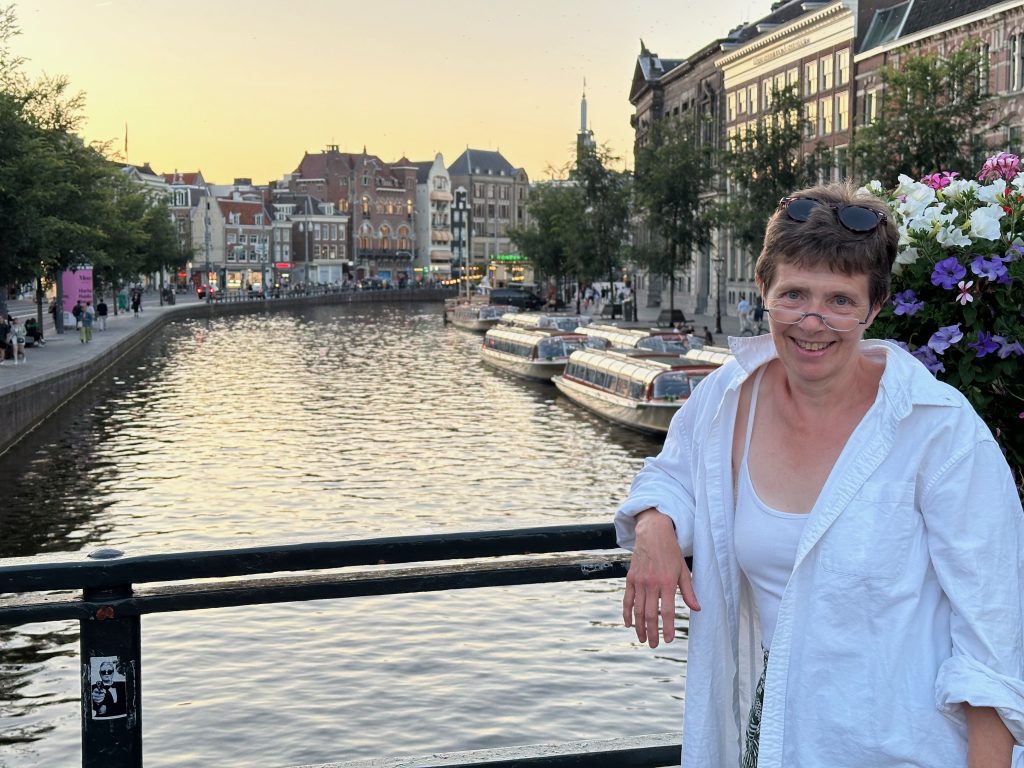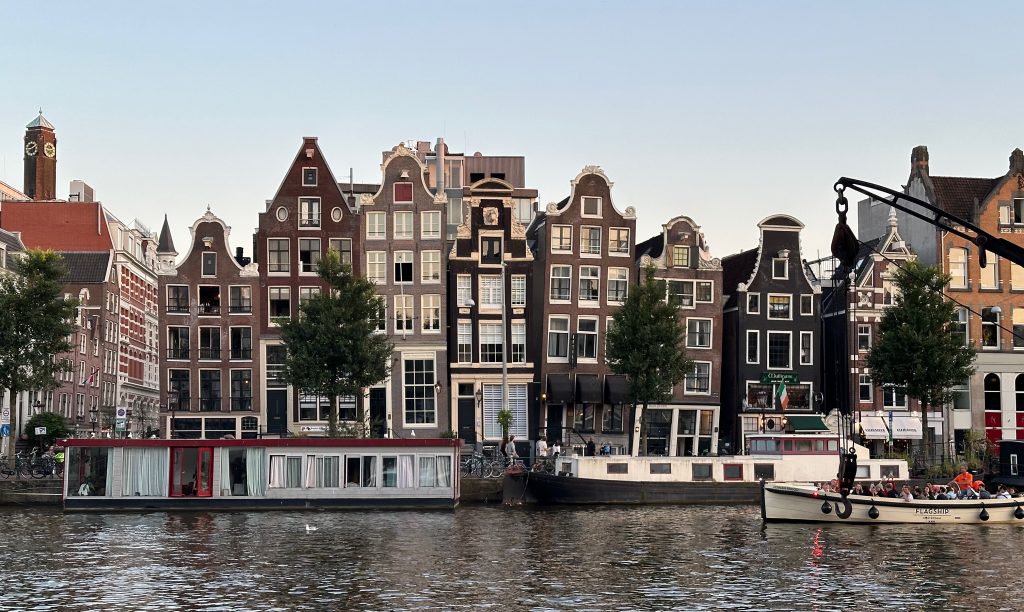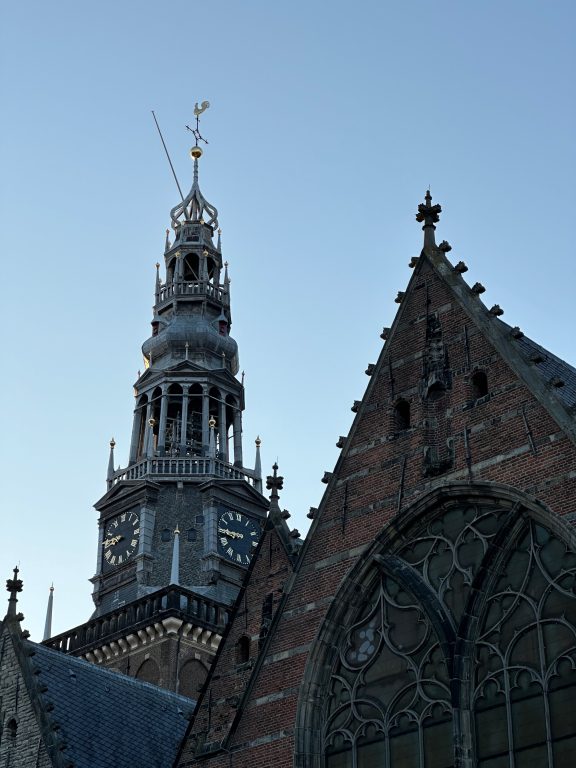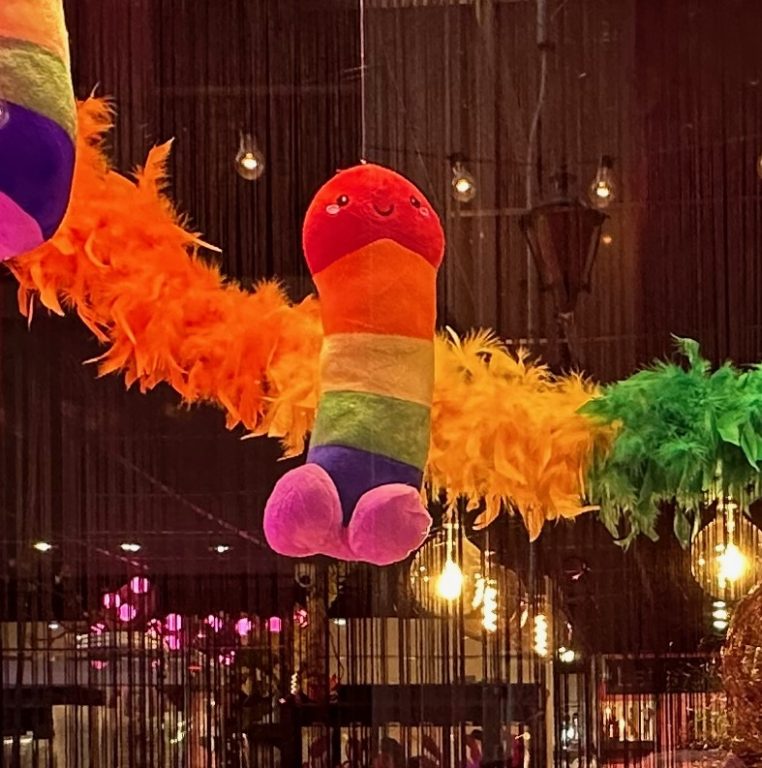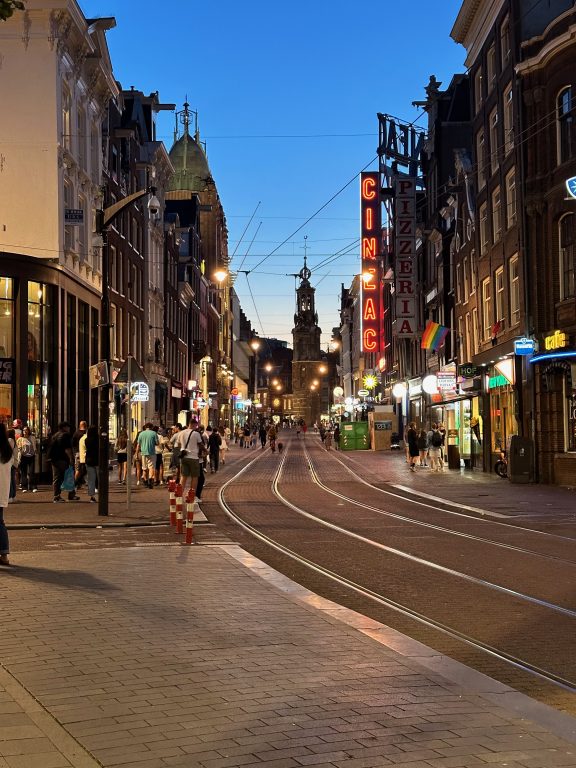Today was our day to take leave of Imke and of Osnabrück, and head to Amsterdam, from where we’ll depart in a couple of days. We spent the morning doing the last bit of the packing, and I even managed to buy a couple more tiny light things for Apollo and Jupiter—fun summer shorts that match. We also got a little more cash from the German ATM, although that may not be needed in Amsterdam anymore than in Germany, and took a farewell walk up to the botanical garden and back past the two former mills that we both like so much. (Now they are just residences, and I always wonder how the owners do with the lack of straight walls?).
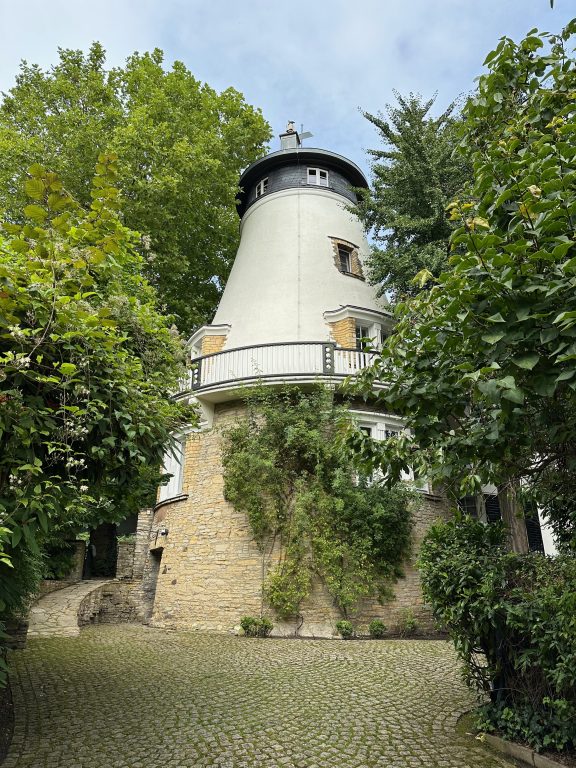
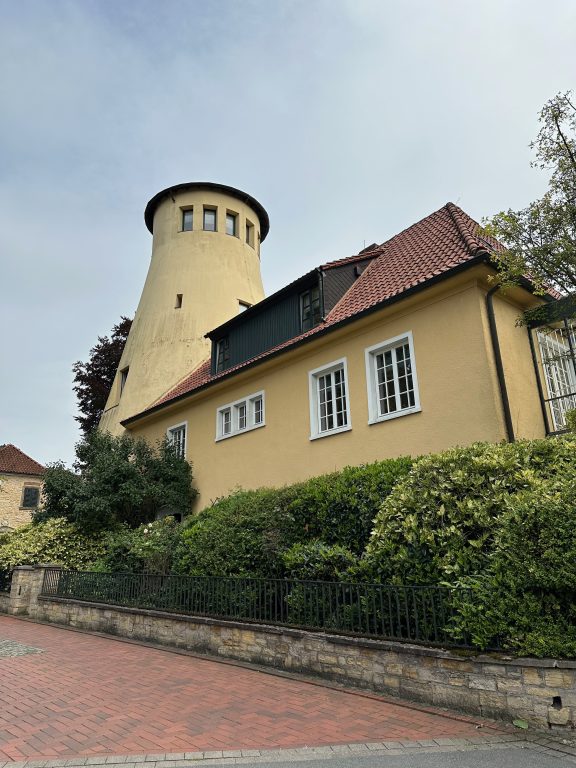
Then we had a last German roll with the lovely German cheeses I like so much (especially one kind that has asafetida seeds in it) and took off—albeit with some delays. The bus had us at the train station within 16 minutes, and we were ready to say goodbye to Osnabrück, but the train was delayed by almost exactly 2 hours and left shortly after 3 pm instead of at 1 pm—and no intermittent train would have gotten us to Amsterdam faster, so we just had to wait around at the station for a LOOOOONG time.
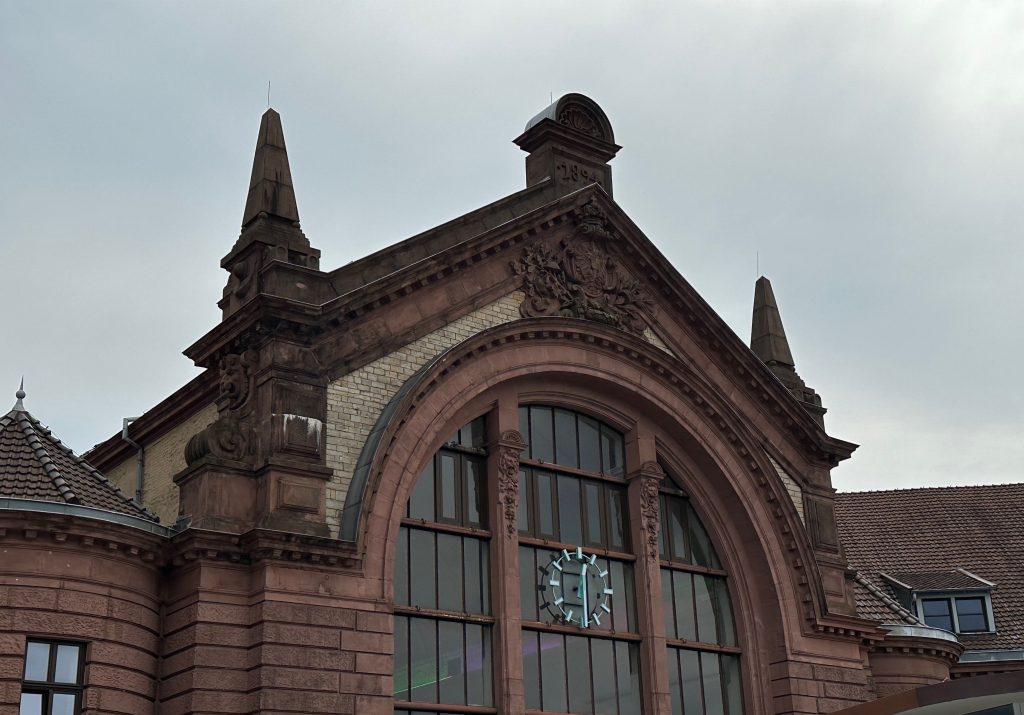
The trip was uneventful after that, and thankfully the AC kicked in and kept it relatively cool on the train on a sunny day (Germans do not believe in arctic A/C) as we zoomed to the German and Dutch countryside. We arrived at the gigantic main station in Amsterdam around 6:30 and had to walk another 20 or so minutes to our hotel, but that felt good, given that we sat around all afternoon! Not to mention that our route took us through the heart of Amsterdam along one of the canals to Rembrandt Square, where our hotel sat among a gazillion bars and restaurants. I picked it for a central location and a not-insane price (still over 15o Euro a night, plus city tax). It’s an old and quirky place with very steep and narrow staircases, with a room that was SUPPOSED to have “one large twin bed” (whatever that is) but in fact has two small twin beds and a view of the backs of at least six different styles of roofs and a lot of pipes and chimneys! But again, as in Copenhagen, the central location is hard to beat!
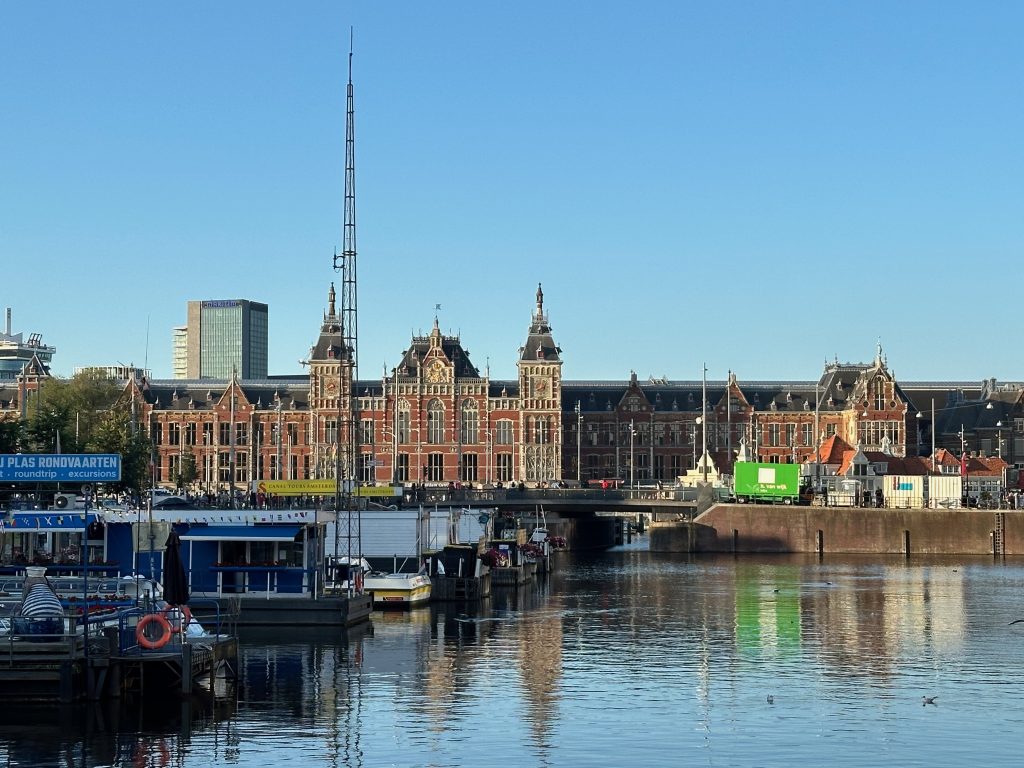
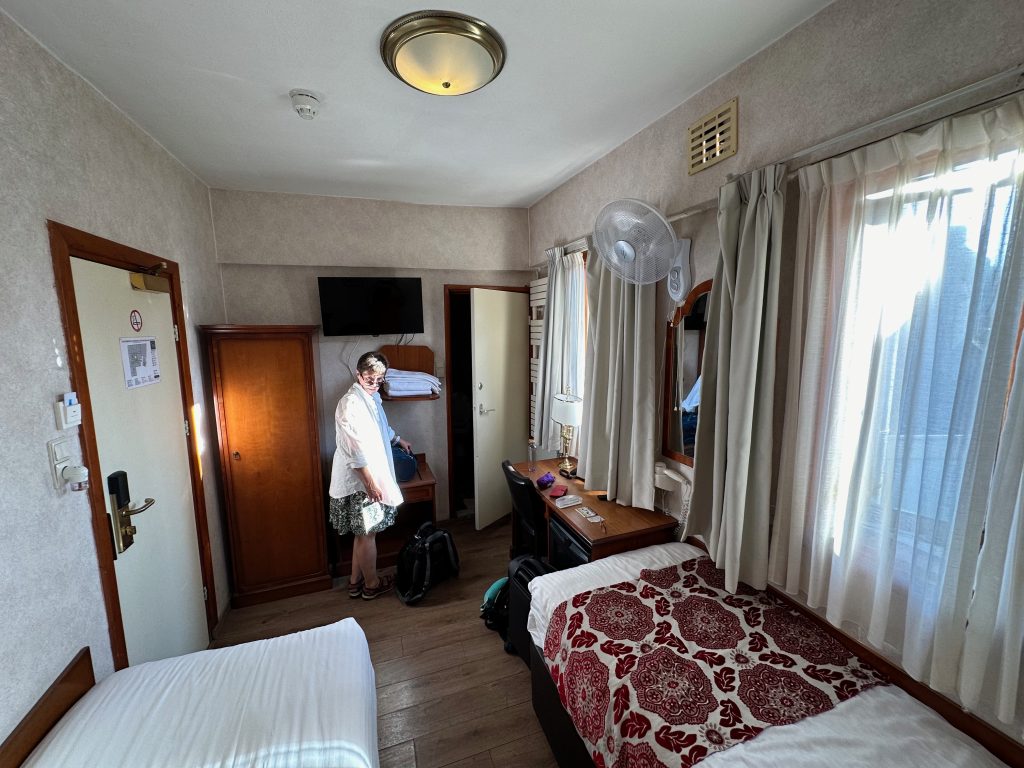
After we had piled our luggage into various nooks and crannies, we went out to wander around the canals, including various placed we’d been before (we remembered our previous hotels well, and also the “secret pathways” to the university, where I’d given a paper back in 2016 when we first visited the city together), also the (now rather tame) red-light district, and just generally the old town area, teeming with tourists from all around the world. We found ourselves some Belgian French fries for dinner and then later some gelato and a (sadly terribly stale and overly sweet) caramel-covered waffle. We had a really good time just looking at people from all over the world, at crooked houses and all kinds of types of boats on the canals, and we also saw various unexpected birds including a Great Blue Heron–apparently an urban bird in Amsterdam, since we saw several more the next day. At the end of our wanderings, as it was getting dark, we sat on Rembrandt Square and watched the lights come on; we knew that for many visitors, this is really when their Amsterdam time begins, but we were tired and went up to our funky little room before 10 pm, glad that it’s facing away from the square and into the quiet back areas of homes, hotels, and businesses. A far cry from the noisy hotel in Copenhagen, and thus much better despite the old furniture, scuffed wallpaper, and lopsided, faded pictures on the wall!
